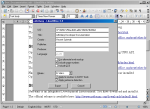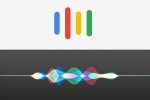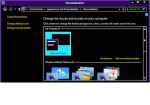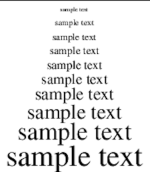Products that match: Built-In Accommodations
36 Results
Note: Changing any of the the sort, count or discontinued filters below will cause the page to reload.
Operating System
Show only products that are compatible with the following operating systems.
Reads both accessible and inaccessible text aloud from websites, images, photographs, PDFs, web-based tests, and other media.
An extension for LibreOffice Writer and OpenOffice.org Writer that converts OpenDocument Text (ODT) to digital talking books in the DAISY format.
VoiceOver gives you auditory descriptions of each onscreen element and provides helpful hints along the way — whether you prefer using gestures, a keyboard, or a braille display.
Siri is a built-in "intelligent assistant," part of Apple Inc.'s iOS, watchOS, macOS, and tvOS operating systems.
Accessibility feature bundled in the Windows Operating Systems that lows for a high contrast visualization of the Windows platform. This makes it easier to read text on a screen.
The brightness on your iPhone, iPad, or iPod touch can be adjusted from the from Control Center or Settings. People with certain types of vision limitations may benefit from lower contrast of colors.
Safari Reader is a feature of the Safari Browser that presents web content in a readable format without distractors that may limit the attention of the reader.
Speak Screen is an iOS feature that will read the text displayed on a device screen.
Zoom is a feature of iOS that magnifies all or part of the screen of an iOS device.
Modify the colors on the display to help a person with color blindness differentiate between the colors that they have difficulty seeing.
Tactile feedback alerts on mobile devices to complement or replace auditory/visual alerts.
Virtual assistants can generally set alarms, answer questions by querying information online, open applications and do other device-specific tasks.
Some people with low vision find light text on a black background and other color inversions to be more accessible than black text on a white background.
Stereo sound can be "mixed down" to monophonic sound so that all of the information (except the spatial distribution) is provided to both ears.
Allows a Braille user to utilize their separate Braille device as a keyboard and/or display for their computer or mobile device.
Audio descriptions can be added to video content, which provide brief descriptions of what is happening on screen. This can help individuals with visual or cognitive impairments better understand video content.
Closed captions are a feature of video that displays what is being said (approximately) in on-screen text. This allows a person who cannot hear the soundtrack (either because of hearing impairment or environmental noise) to understand what is being shown.
Change the brightness difference between the text and the background.
Many devices and operating systems offer the ability to adjust the default font size.
Many devices offer a visual alert in place of, or in addition to, the audible alert.
This feature allows smartphones (not available in tablets) to make calls to hardware TTY devices.
Reduce or remove animation of on-screen actions (e.g. opening or closing applications).
Sometimes the default resolution of a display features text that is too small for an individual to read comfortably or icons that are too small to discern. Most operating systems allow the device to emulate a lower (but not higher) resolution, producing larger-sized, easier-to-see graphics.
Allows a person who cannot see the screen to read content and navigate the Internet as well as their devices.
Many devices and operating systems allow users to expand/magnify what is on the screen.

























